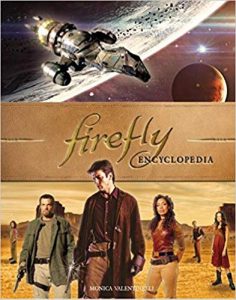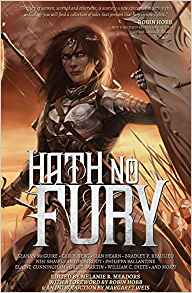Over the years, there have been several theories written about the Voynich Manuscript ranging from the now-debunked idea it was a plagiarized women’s health book to the most recent scholar’s theory that an Italian Jew wrote it. Regardless, the text hasn’t been decoded, even by an AI–and I’ve formed fresh theories about its author beyond my earlier thought that it may be an alchemical text. I have a facsimile of the folios, and after reviewing all the theories I’ve realized the Voynich Manuscript may have been written by a woman.
For background, the vellum has been carbon-dated to the early 1400s, and illustrations potentially place its author in Northern Italy. Okay, so what was happening in Northern Italy at that time? The Italian Renaissance was flourishing despite the long shadow of the Holy Roman Empire and the established patriarchy. While it’s true that belief in witches during this time period was present, primarily among peasants and commoners, keep in mind the hysteria not peak until much later following the publication of the international best-seller Malleus Maleficarum in 1486.
Why write an untranslatable book about women’s health during the Italian Renaissance? One that has no overtly Christian or Catholic-specific symbols in it, either? On the one hand, you have an age of discovery and a period of enlightenment. On the other, you have the establishment of the Church and its political might. In between, however, you also have the birth of an Italian feminist movement that began in the late 14th century. Several Italian women of privilege were not only literate, they also taught at university, published books, and participated in the Italian Renaissance as thinkers of their age. Dorotea Bucca was a professor of health and medicine in Bologna, for example, for forty years from 1390-1430. As another example, Christine di Pizan challenged the idea that women were inferior to men by publishing the City of Ladies in 1404.
This, dear reader, points to my “who”. Who would be interested in writing a book that emphasized women’s health? One that stretched the boundaries of the knowledge they possessed at the time? Who’d have access to vellum and inks? Who’d have access to women to illustrate and study their naked bodies in a non-threatening, non-sexual way? Answer: an Italian woman of privilege. There is no reason to assume the Voynich Manuscript’s author was male, and I feel that gender absolutely plays a role in the discussion about its author given all that was going on in Italy at the time. If the folio was written by an educated woman, then she has more than one reason to ensure the text is not translatable–especially if she continued to work on the text as time progressed. And, since we know that literary among women was not as widespread, those who were educated would have stood out because their numbers were few. So, an Italian woman of means who wanted to explore the sciences would have just cause to write an untranslatable text that only she could decode.
Keep in mind that Yale’s Beinecke Library states that the Voynich Manuscript was written in the 15th or 16th century, and of the articles I read (linked above) this folio was reliably produced before the invention of the printing press. This further underlines the possibility that a woman had yet another reason to hide her discoveries: because there was a growing backlash to the rise in feminism even before the ultra-popular, anti-feminist Malleus Maleficarum was published in 1487. History teaches us that every moment of progress, in this case the Italian Renaissance, is followed by a period of regression. Modern societies weather those periods faster, because the zeitgeist changes at a more rapid rate. Not so in centuries past, for sure. Anyway, this “rubber band” effect caused by a number of factors (including the then-inexplicable plagues) began to target devil-worshipping women as the reason why all bad things were happening; because of that any female doctor, scholar, professor, or healer would be at risk of discrimination or, as the centuries progressed, much worse. Keep in mind the Malleus Maleficarum was not conjured from thin air, and many existing beliefs were drawn upon and extrapolated to fit Church guidelines. (One of the many reasons why this damnable book was so popular.) As one of several examples, the witch’s mark bears a lot of similarities to signs of a bubonic plague infection. All of Europe experienced heavy losses, and when there is no explanation for tragedy and suffering often the most vulnerable populations are to blame. In this case, women.
Why untranslatable? As long as the author retains knowledge, then she’s fighting back against that feminist backlash until it’s safer to do her work once again. Having said that, there is another possibility. Drawing from earlier theories, if the text was copied from an existing text (or, as is more likely, several of them) by someone who was illiterate but of means, then the folio wouldn’t make sense to anyone–including the author. The illustrations could have been the author’s interpretation of existing materials, too, so they aren’t a precise copy. Thus, there may be no translation for the text because the author either did not know what they were writing, they had no guidance to ensure the material was copied correctly, or they were not copying the content for accuracy. Here, too, it’s possible a woman who desired to be literate would have been the author. Who else would be drawn to illustrations of herself and want to hold those dear? Who else would take the time to practice lettering? Who might admire a book and long to read it?
Well, there you have it. A different take on the “who” might have penned the Voynich Manuscript and “why” it can’t be translated. Sadly, I could only prove this with a lot of time and research. So, for now they’ll remain theories. May my author funds be bountiful so I can explore this further one day. Wouldn’t that be amazing!



